The Haswell Review: Intel Core i7-4770K & i5-4670K Tested
by Anand Lal Shimpi on June 1, 2013 10:00 AM ESTCPU Performance: Five Generations of Intel CPUs Compared
For the purposes of our look at Haswell, we will be breaking up our review coverage into two parts. The rest of this article will focus on the CPU side of Haswell, while coverage of the GPU - including Iris Pro and Crystalwell - has been spun off into another artice: Intel Iris Pro 5200 Graphics Review: Core i7-4950HQ Tested.
The majority of the market doesn’t upgrade annually, so I went back a total of five generations to characterize Haswell’s CPU performance. Everything from a 2.53GHz Core 2 Duo through Nehalem, Sandy Bridge, Ivy Bridge and Haswell are represented here. With the exception of the Core 2 platform, everything else is running at or near the peak launch frequency for the chip.
In general, I saw performance gains over Ivy Bridge of 1 - 19%, with an average improvement of 8.3%. Some of the performance gains were actually quite impressive. The 7.8% increase in Kraken shows there’s still room for improvement in lightly threaded performance, while the double digit FP performance gains in POV-Ray and x264 HD really play to Haswell’s strengths.
Compared to Sandy Bridge, Haswell looks even more impressive. The Core i7-4770K outperforms the i7-2700K by 7 - 26%, with an average performance advantage of 17%. The gains over Sandy Bridge aren’t large enough to make upgrading from a Sandy Bridge i7 to a Haswell i5 worthwhile though, as you still give up a lot if you go from 8 to 4 threads on a quad-core part running heavily threaded workloads.
Compared to Nehalem the gains average almost 44%.
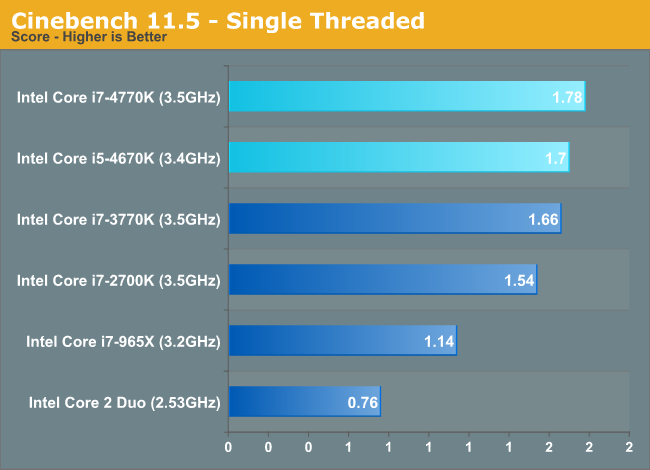


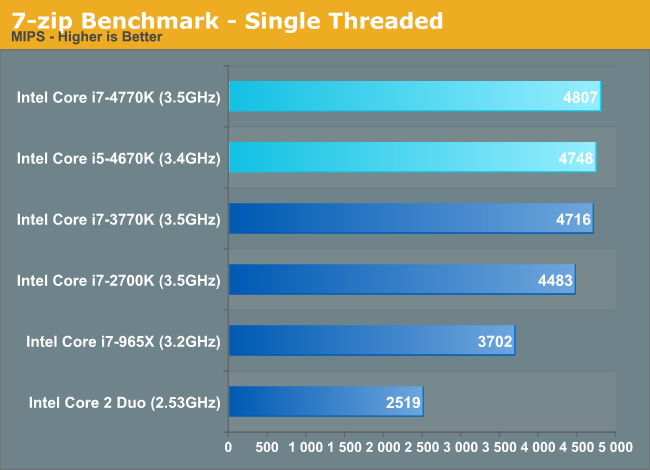
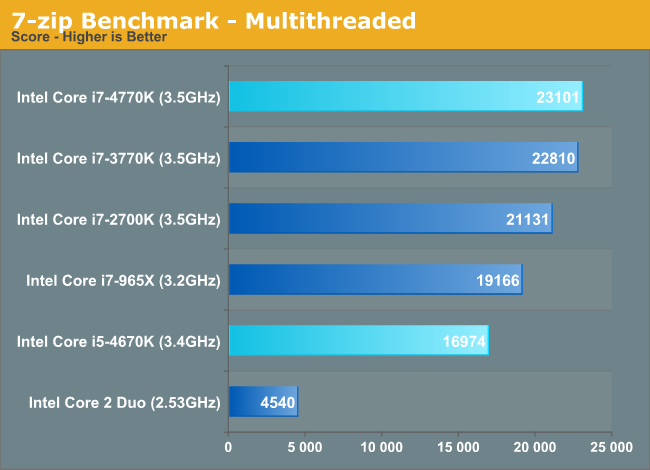
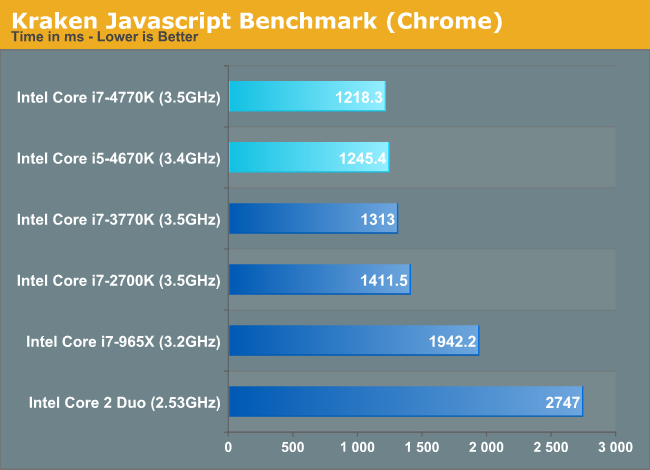
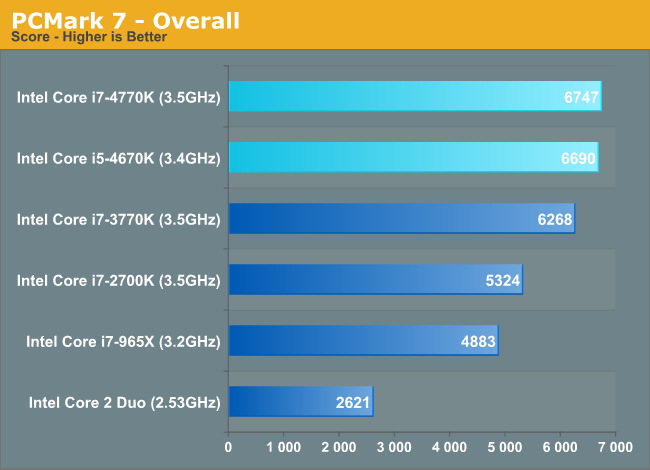
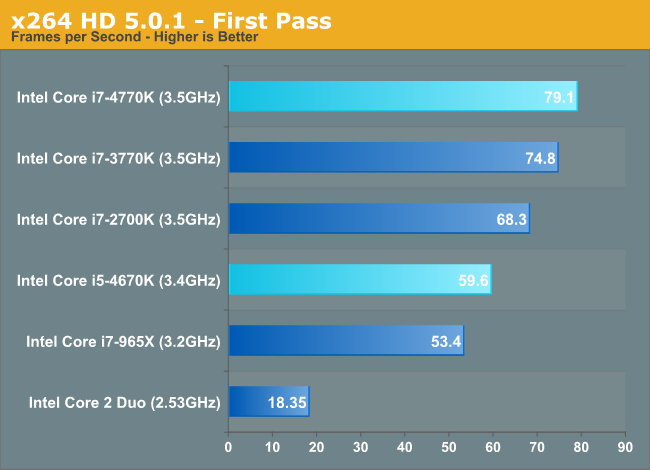
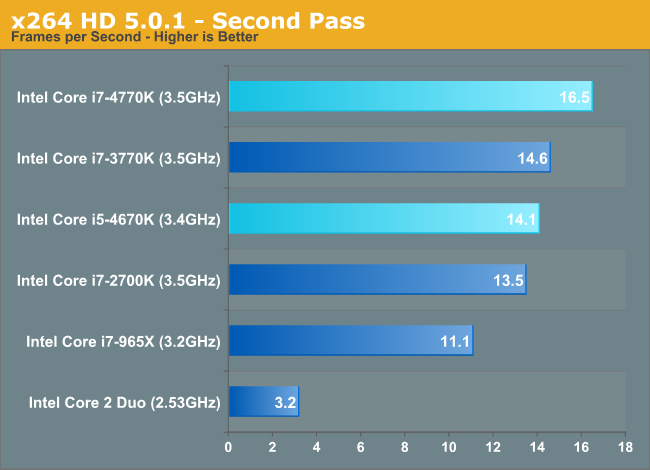
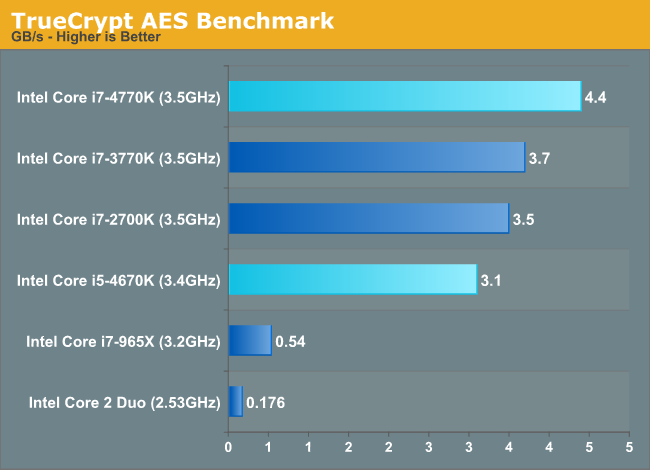

Quite possibly the most surprising was just how consistent (and large) the performance improvements were in our Visual Studio 2012 compile test. With a 15% increase in performance vs. Ivy Bridge at the same frequencies, what we’re looking at here is the perfect example of Haswell’s IPC increases manifesting in a real-world benchmark.
Gaming Performance
After spending far too much time on the Iris Pro test system, I didn’t have a ton of time left over to do a lot of gaming performance testing with Haswell. Luckily Ian had his gaming performance test data already in the engine, so I borrowed a couple of graphs.
As expected, Haswell is incrementally quicker in GPU bound gaming scenarios compared to Ivy Bridge - and most definitely at the top of the charts.
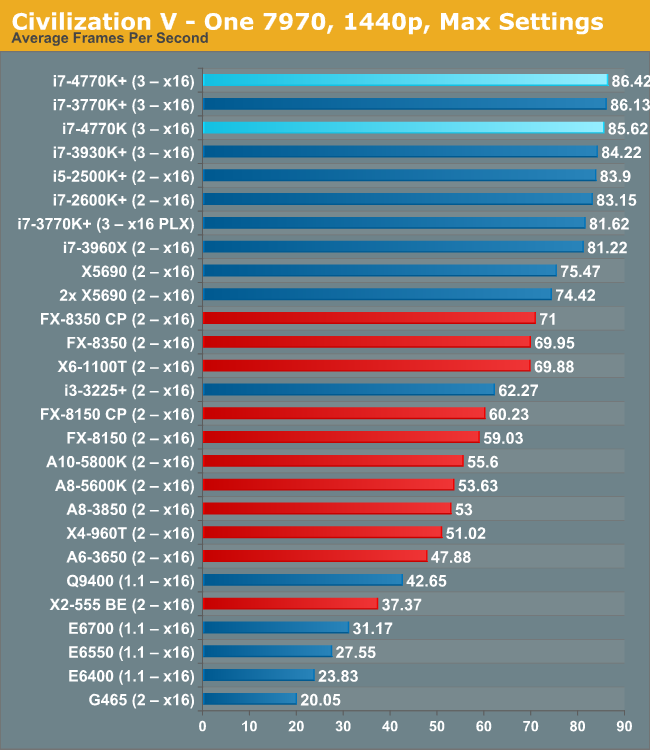











210 Comments
View All Comments
Ninokuni - Saturday, June 1, 2013 - link
"The new active idle (S0ix) states are not supported by any of the desktop SKUs"Does this mean the whole PSU haswell compatability issue is now irrelevant?
jhoff80 - Saturday, June 1, 2013 - link
I believe that PSU issue was in relation to the C6 and C7 states, not S0ix.smilingcrow - Saturday, June 1, 2013 - link
Correct as desktop PSUs are used with desktop CPUs. :)Egg - Saturday, June 1, 2013 - link
To reiterate owikh84, there appears to be a serious typo in the title - it should be 4670k, not what appears to be a nonexistent 4560k part.RaistlinZ - Saturday, June 1, 2013 - link
This review was a bit more positive than the one at Guru3d. Their numbers show the performance difference being almost nothing. Guess my i7-930 @4Ghz will dredge on for another generation.chizow - Saturday, June 1, 2013 - link
I'd consider it but the IPC gains alone since Nehalem make the upgrade worthwhile, and the rest of the X58 specs are already sagging badly. It still does OK with PCIE bandwidth due to the 40 total PCIE 2.0 lanes, but 20 PCIE 3.0 lanes is equivalent with PCIE 3.0 cards. The main benefit however is running SATA 6G for my SSDs and gaining some USB 3.0 ports for enclosures, etc. They have been bottlenecked for too long on SATA 3G and USB 2.0.I would consider waiting for IVB-E or Haswell-E but Intel always drags their feet and ultimately, these solutions still end up feeling like a half step back from the leading edge mainstream performance parts.
zanon - Saturday, June 1, 2013 - link
Intel's artificial segmentation of some features are more irritating then others, but not including VT-d everywhere really, really sucks. An IOMMU isn't just helpful for virtualization (and virtualization isn't just a "business" feature either), it's critical from a security standpoint if an OS is to prevent DMA attacks via connected devices (and just helping increase stability also). It should be standard, not a segmentation feature.klmccaughey - Monday, June 3, 2013 - link
Yea, I just don't get why they dropped VT-d. Really silly. A lot of power users on the desktop use virtualisation.Chriz - Saturday, June 1, 2013 - link
I'm curious about something. If you say Intel got rid of legacy PCI support in the 8 series chipsets, why am I still seeing PCI slots on these new motherboards being released? Are they using third party controllers for PCI?CajunArson - Saturday, June 1, 2013 - link
"Are they using third party controllers for PCI?"Yes.